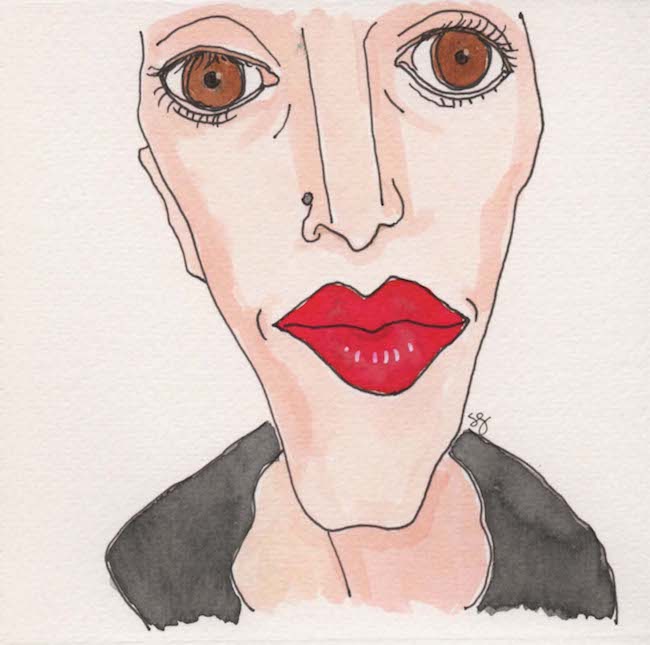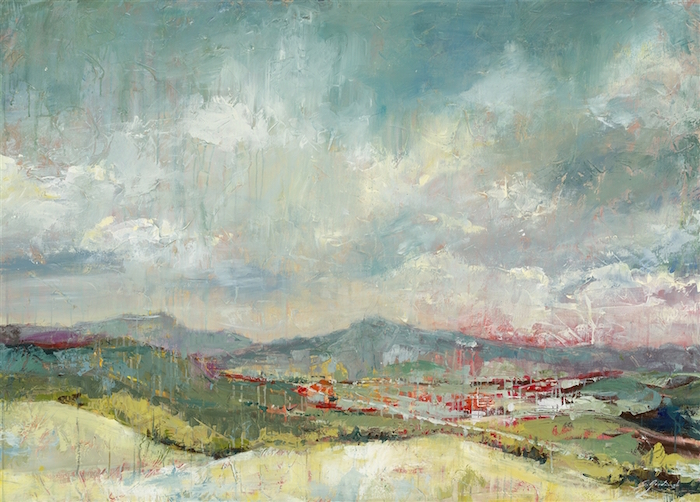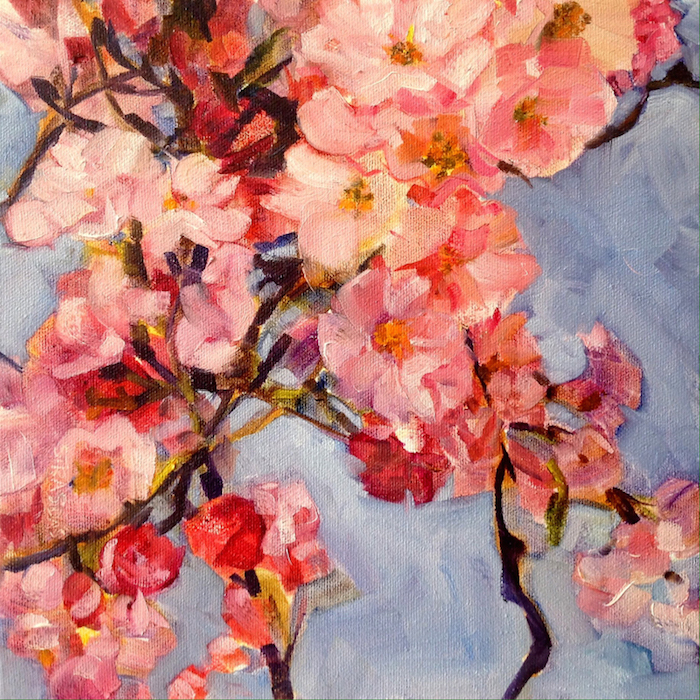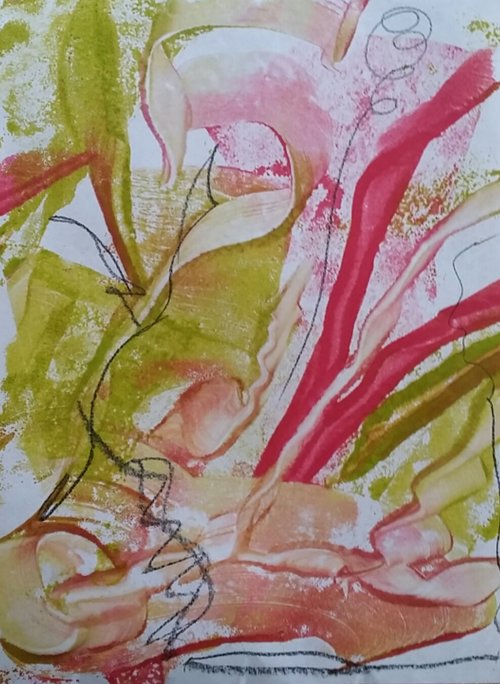If it’s on your bucket list to schedule a museum exhibition, volunteer or work at a museum, or see your art in a museum collection, you will benefit if you understand how a museum administration is structured.
While I haven't been part of the museum world since 2001, I am confident that what I share below can still be helpful to you. Keep in mind, however, that not all museums operate the same way, and there is a vast difference between how small and large museum personnel divide their responsibilities.

Let’s start with an overview of the basic museum hierarchy.
Museum Hierarchy
Board of Directors
Or University Dean, Provost or President. This official body is ultimately responsible for the overall well-being of the institution.
↓
Director of Museum
↓
Museum Staff
↓
Volunteers
Now we can look at the individual roles of the staff members.
Directors
Museum directors are responsible for overseeing all operations. They keep the board of directors informed through regular meetings and as-necessary contact. They serve at the pleasure of the board.
Directors often have art backgrounds, but more and more of them have business experience and political (fundraising) acumen.
The director juggles trying to please the staff, the board, the university (if on a campus), the public, and volunteers.

How an Artist Might Work with a Museum Director
In museums with a curatorial staff, you probably wouldn't have much contact with a director. However, it might be necessary for a director to assume some of the roles below if there are only a few on staff at the museum.
Curators
Curators, who answer to the director, are the objects (art) experts on a museum staff and often hold doctorates in art history. Being the objects experts, curators shape the content of museum collections and exhibitions, and write and speak extensively about the art.
Some museums are lucky to have more than one curator. In these cases, curatorial responsibilities might be divided into exhibitions (curator of exhibitions) and collections (curator of collections). Alternatively, they could be differentiated by medium (curator of prints) or eras (curator of contemporary art) or even by chief curator and assistant.
Smaller museums might not have a curator, instead relying on a director to assume curatorial responsibilities in addition to administrative ones.
Curators often perform services for the art community outside their own walls. They might judge exhibitions for organizations or other institutions, sit on grant panels, or contribute text to magazines, brochures, and catalogues.

How an Artist Might Work with a Museum Curator
Curators are the reason you want to keep excellent records of your work and exhibitions and why you want to become better and better at articulating what your work is about. They will want to dive in to every detail of your career.
If you stumble when writing or talking about your art, join us for Magnetic You.
Online class begins April 12.
If you were to submit a proposal for a museum exhibition, it should be addressed to the curator.
The curator makes studio visits in order to select the work for exhibition. He or she would conduct extensive interviews with you (privately and, perhaps, in a public forum) in order to ensure the intellectual integrity of the exhibition.
The curator is also the person who recommends additions to the collections.
Please note that museum exhibitions and acquisitions are a long-term goal. It takes more than submitting work to a curator to see your art in a museum.
Registrars

The primary responsibility of registrars is a big one: they are responsible for the care of the artwork. They make sure it’s safe, secure, and in good condition. They might report to directors or curators.
Registrars supervise shipping, insurance, donor forms and condition reporting. They are the meticulous record-keepers of the museum and usually have an art or art history background.
How an Artist Might work with a Museum Registrar
The registrar will ask you for object lists with insurance values. He or she would also coordinate any shipping arrangements of your work and communicate with you if there were any problems with the condition of the art.
Preparators
Preparators, often artists themselves, are the people who prepare a space and its content for public view.
Preparators are responsible for the physical aspects of storing, transporting, and exhibiting the artwork. They pack, uncrate, move, and install the work. They might paint the walls, put up labels, and build pedestals and other display mechanisms. They also oversee lighting and climate control.
As I said, museums divide these responsibilities differently, but preparators usually report to the registrar.
How an Artist Might Work with a Museum Preparator
A preparator might check with you about your wishes for installing the work. Is it right-side-up? At what height should the hanging discs in your installation fall?
Educators
Museum educators interpret the artwork for the public. They take the art-ese of the curator and transform it, magically, into the vernacular. (You can easily differentiate labels written by the curator from those written or edited by the educator.)

Educators oversee group tours, studio programs for children and adults, public lectures, label writing, interactive spaces, demonstrations, gallery guides, and other interpretive programs. They are also responsible for docent training.
A large museum would separate the education responsibilities among the staff, so that you might have an educator for school programs or an educator for family programs. Most educators report immediately to the director, but some old-fashioned museums have them working under curators.
How an Artist Might Work with a Museum Educator
Educators hire artists to speak, to give demonstrations, train docents, and lead classes. They might also ask you to volunteer for these roles.
Other Roles
While these are the people at museums that you would work most closely with, you will also come across store managers, volunteer coordinators, development directors, marketing directors, and technology experts.
My hope is that you have a better understanding of how things work behind the scenes in art museums.


16 thoughts on “Who’s Who in the Art Museum”
Excellent article on the basics!
Thanks, Ruth.
Alyson,
Yesterday I had the pleasure of being interviewed for three hours in my studio by a museum DOCENT.
My work was recently acquired for this museum’s permanent collection and the docent and I will talk to the public about my careeer and the painting in May.
Docents play a crucial role in a museum.
Leslie: It’s fantastic that you spent that much time with the docent. S/he will become a huge advocate for your art now and in the future.
Great information Alyson, thank you. I work in an area that has many small to medium size museums and art centers. It has been very helpful for my career to become members of these organizations and to support their activities. This has helped me get to know the curators and directors on a first name basis. It then is comfortable to invite them to your studio when you have a body of work to propose. A friend of mine was disappointed when he invited our new curator to lunch at his home and she didn’t ask to see his studio. I asked him, if he asked her, if she would like to see if while she was there. He did not and missed a prime opportunity to show her his work.
Good for you, Tara. And how amazing that your friend didn’t have that on his radar. I’m sure that’s one of the main reasons she came.
Wonderful and helpful article as usual!
I wonder if large, prestigious Museums, like the Art Institute of Chicago, would ever have an exhibit of an artist still living, and not famous. Would they have an exhibit on art quality, alone?
Very doubtful, Maureen.
Very helpful article. I understand that exhibitions are usually by invitation from the museum and they do not take submissions from artists. There may be a separate place for emerging artists to show such as art rental and sales. Getting involved and knowing who to talk too seems like a good start. Thanks for outlining the various roles in museums.
Yes, that is true most of the time, Jane. But smaller museums without a curator might be open.
Thank you. Very helpful information, I will pass this post on to my artists! Visker Art Studio & Designs.
Thank you for sharing, Dottie.
Guess who the new proud owner of the orginal painting “Look up, look up” by Marcela Strasdas after I saw it here- it’s me it’s me!!!
Original… Caught my own typo:)
As a long time lurker on the blog, I appreciate this article for the clarity about who’s who in the zoo! It had taken me many years to figure out the roles and responsibilities of the staff at museums and art galleries. I am going to volunteer at an upcoming art fair to expand my knowledge as well. The logistics of running a booth at an art fair leaves no time for networking! Thanks for all of the great info.
Lance: Thanks for lurking! Glad you found this helpful.